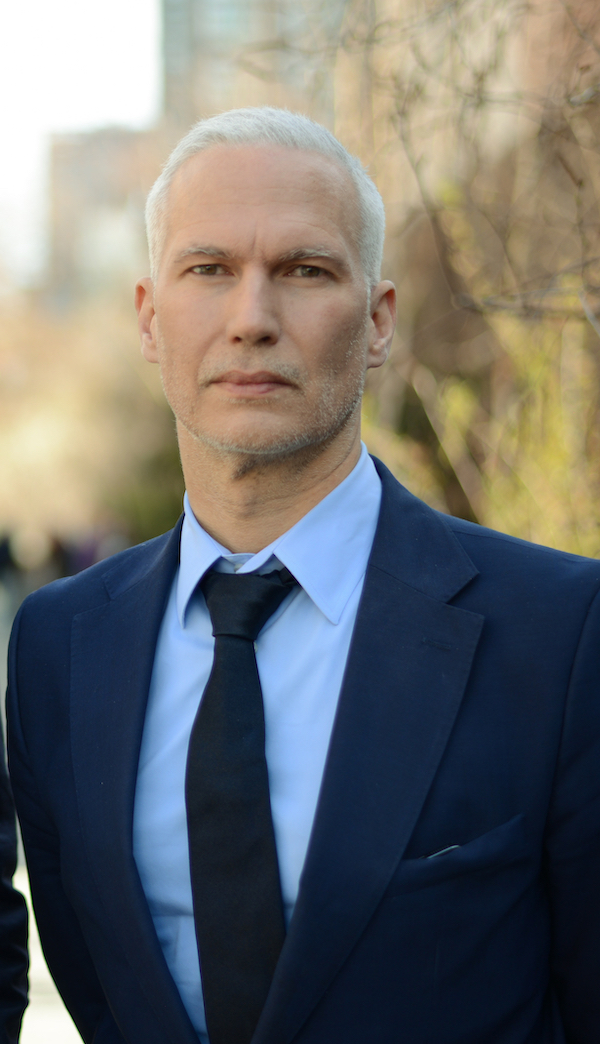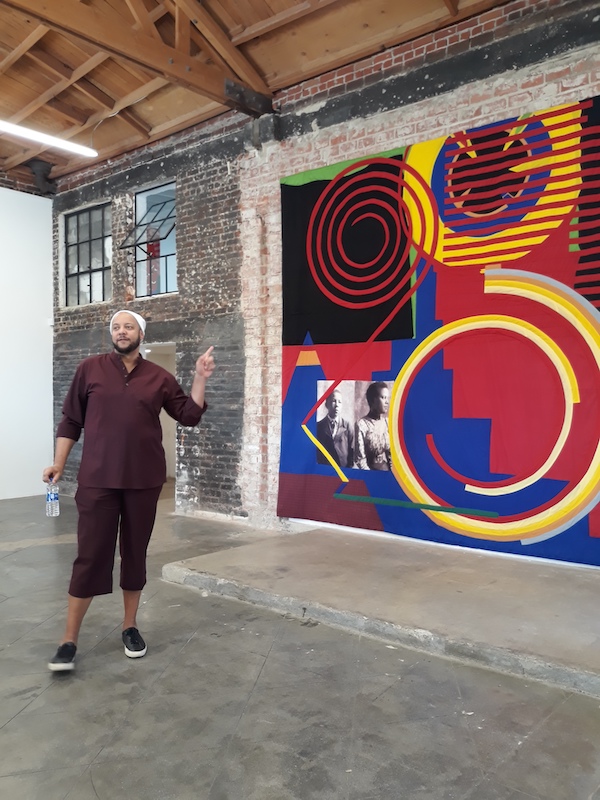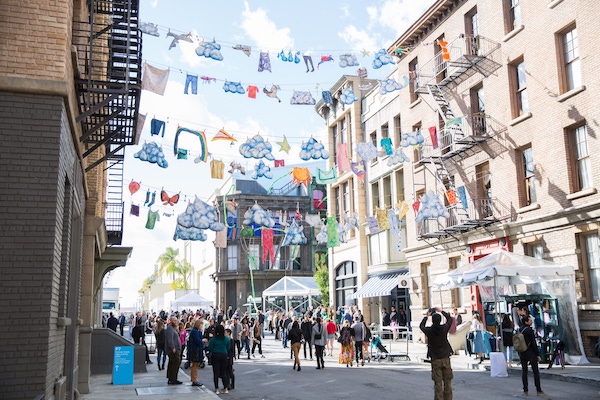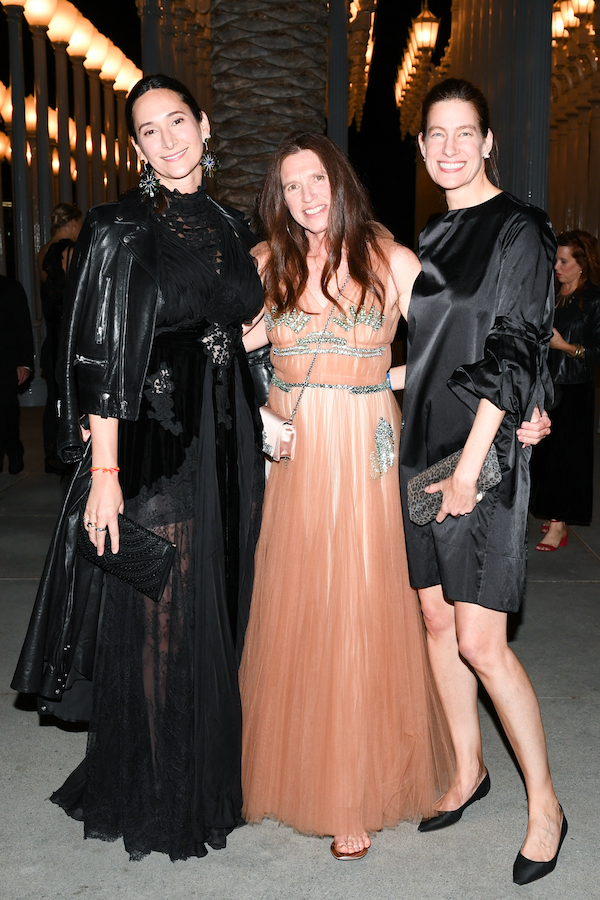Museums and Unions
The Marciano Art Foundation has closed, abruptly and in a cloud of controversy. Since its opening in 2017, most of the employees worked part-time, handling visitor services and making close to minimum-wage salaries. On November 1, District Council 36 of the American Federation of State, County and Municipal Employees (AFSCME) filed with the National Labor Relations Board (NLRB) to represent those workers and other employees at the museum. Within days the workers were all laid off. The museum closed on Nov. 6, saying the closure was “due to low attendance the past few weeks.” On December 6 it sent around a press release saying it would “remain closed permanently.”

Paul and Maurice Marciano at GUESS x J Balvin launch party.
“The Marciano Art Foundation, created by Guess founders Maurice and Paul Marciano to showcase their contemporary art holdings,” wrote Jori Finkel so succinctly for The Art Newspaper, “was from the start a private collection masquerading as a museum.” Apparently, one can acquire art for one’s nonprofit museum and avoid the taxes on purchase, although it is unclear whether the art in the museum was donated or on loan from the Marcianos.
MAF has always been a bit mysterious about how it is run, and did not have a full-time curator. In March Jamie Goldblatt Manné, who had been with the museum since its start, left her post as director. Olivia Marciano, daughter of co-founder Maurice, has been artistic director of the institution since 2016, and organized the last full-scale special exhibition there, “Donna Huanca: Obsidian Ladder,” which ended a month ahead of schedule with the closure. A complaint by the union against MAF has been lodged with the NLRB.

Klaus Biesenbach, museum director of MOCA.
Meanwhile, over at the Museum of Contemporary Art Los Angeles (MOCA) the employees were also restless. In November it was reported that “dozens” of visitor services workers met with museum director Klaus Biesenbach to announce their desire to unionize with the same AFSCME—citing concerns over low wages, lack of benefits and unpredictable scheduling. At first the museum sent out a statement reading, “While we respect the right of employees to decide whether or not they wish to be represented by a union, we do not believe that this union is in the best interest of our employees or the museum.”
Then the turnaround—maybe they were spooked by the controversy over the Marciano. On December 6—yes, that’s right, the same day as the Marciano announcement re permanent closure—MOCA issued a press release announcing it would support unionization. In it, Biesenbach stated that, “Our valued and engaging staff are the face and backbone of our museum and, in embracing this agreement, we are investing in the long-term vibrancy of an organization founded by artists and dedicated to the promotion of the arts as a public good in Los Angeles. We will move forward in good faith to establish an equitable and sustainable contract.”
Kudos to MOCA for seeing the value of sense and equity! And starting Jan. 11, 2020, admission will be free—thanks to a most generous grant from board member Carolyn Powers.
Let’s review the startling wage differentials between management and worker bees at museums. According to the website paysa.com, the average salary of the director of development at MOCA (they don’t say how many responded, just under 20) is $164,656. It must have taken a salary two times that for the museum to entice Biesenbach to take over the museum’s troubled directorship last year. A former employee at MOCA recently told me that when she worked there two years ago, most of the staff who didn’t have managerial positions were making near minimum wage—currently, $14.25 in Los Angeles.
Openings and Reopenings
New kid on the block at the end of the year is Fort Gansevoort, originally founded in NYC’s meatpacking district by Adam Shopkorn. On December 14 they opened their new outpost in East Hollywood (not a term I’ve heard much), a 3,000-square-foot street-level space in the Merrick Building, which has 20-foot-tall ceilings and Art Deco details. The inaugural show is by multimedia artist and author Christopher Myers, followed in February 2020 with a show by Israeli art pillar Zoya Cherkassky. Welcome!

Christopher Myers at Fort Gansevoort Gallery.
Elsewhere, galleries are moving into vertical formation—something long found in New York and San Francisco. They are taking advantage of revamped industrial buildings, such as 1700 S. Santa Fe with its large windows, great views, and, oh so importantly, plenty of parking space. That building now houses four galleries—so far, all relocated from elsewhere in the city.

1770 S. Santa Fe building.
Susanne Vielmetter was the first to move early last year, taking over much of the ground floor—11,000 square feet—and rebranding itself Vielmetter Los Angeles. Then Nicodim and Gavlak moved in, and in November Wilding Cran had a splashy opening with “LA on Fire,” a group show featuring over 50 artists including Tony Berlant, Zoe Crosher, Gajin Fujita, and Pae White. Nicodim shares the first floor with Vielmetter, and Gavlak and Wilding Cran are on the fourth floor, both with expanded square footage. Sarah Lewiecki of Gavlak and Anthony Cran of Wilding Cran both said they would love for more galleries to move in. Take note: there certainly appears to be spaces available.
Frieze 2.0 and Breaking News
Back in the Paramount Studios lot, Feb. 14–16, is the second edition of Frieze Los Angeles. The number of participants in the Galleries section will be about the same—70—with some newbies and more international ones. Dealers in the mix for the first time include David Lewis, Gavin Brown’s Enterprise, Gladstone Gallery, Goodman Gallery, House of Gaga, Skarstedt and Xavier Hufkens.

Frieze LA backlot at Paramount, 2019.
One section, or perhaps I should say subsection, will be Focus LA, curated by Rita Gonzalez of LACMA. It’s reserved for emerging LA galleries, defined as 15 years or younger—which is a lot of galleries in LA. This grouping actually existed last year but more informally, and apparently the selected galleries were given reduced rates. Among the 13 Focus LA invitees will be Charlie James Gallery, Overduin & Co., as-is.la and Various Small Fires.
For me a highlight of last year was Frieze Projects in the backlot, which emulates a New York–style row-house neighborhood. I’m glad to know it’s back, and this year it is being curated by Gonzalez and Pilar Tompkins-Rivas, director of the Vincent Price Art Museum. I caught up with Tompkins-Rivas over the phone.

Mira Dancy at Night Gallery featured in Frieze LA 2020.
“We’re working very closely together, and we have worked together in the past,” she said. “Rita actually reached out to me and asked me to join her.” They started collaborating this summer, inviting galleries to submit proposals, and also “reached out to other galleries with artists of interest to us.” There’s a budget to commission a few pieces, and they also approached artists directly for some of the projects. “In particular, we wanted to engage the archives at Paramount.” While many of the artists are SoCal-based, there will also be some from elsewhere. Alas, as of writing, the curator could not officially release the names of any artists, so stay tuned. Yours Truly will try to do an online update…

Bettina Korek, Mary Weatherford, and Erin Wright at LACMA gala.
And now for Breaking News: Frieze was very astute to appoint an LA Art Insider, Bettina Korek, as executive director of its LA operations. Now Korek will be leaving us – both the fair and our fair city—after the next edition of Frieze LA. She has just been appointed chief executive of the Serpentine Galleries in London, taking up the new mantle in March. Serpentine, located in Kensington Gardens, is one of the highest-profile institutions of modern and contemporary art and architecture in the world.











0 Comments